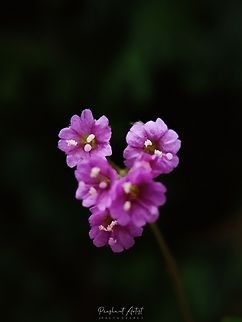
Appearance
''Boerhaavia diffusa'' is widely dispersed, occurring throughout India, the Pacific, and southern United States. Flowers are small, around 5 mm in diameter. Pollens are round, roughly 65 microns in diameter. This wide range is explained by its small fruit, which are very sticky and grow a few inches off the ground, ideally placed to latch on to small migratory birds as they walk by.HABIT
A creeping, perennial, much-branched herb with stout fusi form roots.
STEM
Branches divaricate, stem purplish, thickened at nodes.
LEAVES
Opposite, oblique, ovate or sub orbicular, rounded, entire, margins slightly pinkish, wavy, lower surface with small, white scales, base rounded.
INFLORESCENCE
Small umbels forming Corymbose, axillary and terminal panicle.
FLOWERS
⤷ Bracteoles , acute. Perianth -tube constricted above the ovary, limb funnel-shaped, dark-pink, with 5 vertical bands outside.
⤷ Stamens 2 or 3, slightly exserted, unequal.
⤷ Ovary superior, oblique, ovule 1, erect, stigma.
FRUIT
Achene rounded, 6-ribbed.
SEED
Minute, albuminous with endosperm. Embryo curved.
Distribution
A true and accurate accounting of the native range of ''Boerhavia diffusa'' has not been determined. However, it is very widespread, and has become naturalized in many places. It is believed to be a native plant to the following places in:⤷ Africa —
Botswana, Egypt, Eswatini, Ghana, Kenya, Liberia, Malawi, Mozambique, Namibia, Nigeria, Rwanda, Senegal, Sierra Leone, Somalia, South Africa , , Tanzania, Togo, Uganda, Zambia, and Zimbabwe.
⤷ Asia —
Bangladesh, Sri Lanka, Burma, Cambodia, China , India, Indonesia, Japan , Laos, Malaysia, Nepal, Pakistan , the Philippines, Southern Taiwan, Thailand, and Vietnam. Also, on the Arabian Peninsula in Oman, Saudi Arabia, and the United Arab Emirates, and Yemen .
⤷ North America —
Mexico, and the U.S. .
⤷ Caribbean —
Anguilla, the Bahamas, the Cayman Islands, Cuba, Dominica, Grenada, Hispaniola , Jamaica, Montserrat, the Netherlands Antilles , Puerto Rico, Saint Lucia, Saint Vincent and the Grenadines, and both the British and the U.S. Virgin Islands.
⤷ South America —
Argentina, Belize, Bolivia, Chile, Costa Rica, Ecuador, French Guiana, Guatemala, Guyana, Nicaragua, Panama, Paraguay, Peru, Suriname, Uruguay, and Venezuela.
⤷ South Pacific —
Fiji, and New Caledonia.
Uses
This section needs additional citations for . Please help by adding citations to reliable sources. Unsourced material may be challenged and removed.This article needs more for or relies too heavily on . Please review the contents of the article and if you can. Unsourced or poorly sourced material may be challenged and .''Find sources:'' – · · · ·
Having anti-inflammatory and expectorant properties, ''Boerhavia diffusa'' is said to be a good cure for Amavata , and simulates rheumatoid arthritis ). The root acts as an anticonvulsant, analgesic, laxative medication that when rubbed in honey can be locally applied for cataract, chronic conjunctivitis and blepharitis. Useful for curing heart diseases, anemia and edema , Punarnava is an effective remedy that reduces swelling and foul smell in skin disorders. Apart from the root, Punarnava's leaves are also consumed as a vegetarian dish to reduce oedema.
As an Ayurvedic medicine, this herb is said to cure disorders like intestinal colic, kidney disorders, cough, hemorrhoids, skin diseases, alcoholism, insomnia, eye diseases, asthma and jaundice,Boerhavia diffusa (Sri Lankan Name Pita Sudu sarana best green medicine for Diabetes .
References:
Some text fragments are auto parsed from Wikipedia.